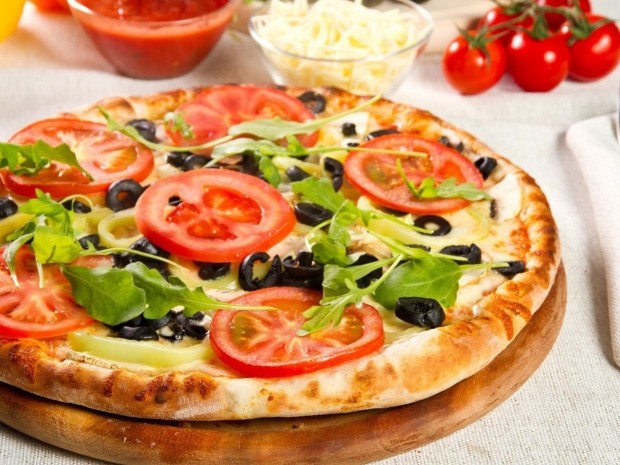Nutritionally enhanced 'Chance Food' planned

The Europe-wide 'Chance' project, which looked at ways to develop nutritious food for people at risk of poverty, unveiled its findings at a conference in Belgium this month. The project involved academic institutions across Europe, which conducted extensive surveys and research into consumers eating habits and lifestyle.
The project also developed low-cost, nutritionally enhanced foods including tomato ketchup, pizza, ham, cheese, bread loaves and blueberry-based products.
Chance bread
The Chance bread with soybean had higher protein, vitamins and dietary fibre than traditional bread. The total dietary fibre content of the bread was increased from 6% to 14% while its carbohydrate and energy content were decreased, with starch reduced from 35% to 10%.
And the level of vitamin E in Chance ham was 150% higher and iron is 25% higher than in common cooked ham.
The Chance foods were subjected to a number of economic and sensory tests, such as their appearance, smell, taste and texture to evaluate product competitiveness against leading brands. These tests showed that Chance products were indistinguishable in taste compared to current brand-leading products.
Chance researchers also explored the barriers towards healthy eating, and concluded, based on surveys of over 1,000 consumers, and interviews with 32 small-and-medium-sized enterprises and 21 retailers across five European countries, that one of the main barriers is lack of knowledge about healthy foods. Healthier foods are perceived as both expensive to purchase and to produce and less tasty.
Risk-of-poverty
Nutritionally enhanced food products will not just aid those at risk-of-poverty, researchers said. Results from the project show that saturated fats, salts and sugars are too high in the population as a whole and important fibre, vitamins and minerals are lacking in people’s diets.
Researchers from the project recommended that healthy eating initiatives and schemes are developed and promoted, such as cookery classes for all ages, with a greater provision of healthy ready-to-eat lunches and snacks. The food industry is aware that risk-of-poverty consumers are an increasing market segment to be targeted with tailored, nutritionally enhanced foods, they said.
Coordinator of the project Francesco Capozzi said: “We are going to propose a new legal entity formed by the present consortium which will exploit and disseminate the Chance concept and trademark. Moreover, we are developing the guidelines which will define the standards that a food must meet to be called ‘Chance Food’”.
The Chance project involved a number of studies, for example, an international research team interviewed over 1,000 consumers, and conducted 53 face-to-face interviews with representatives from 32 small-and-medium sized enterprises (SMEs), food processing industries and 21 retailers in Finland, Italy, Lithuania, Serbia and the UK
Another team collected 2,372 urine samples from participants in five in centres in Finland, Lithuania, Italy, Serbia and the UK.
And another study was conducted with 1,290 participants across Finland, Italy, Lithuania, Serbia and the UK.
Lifestyle survey
A food consumption and lifestyle survey and a detailed molecular analysis of individual urine samples could not predict differences in nutritional habits between recruited participants from a ‘risk-of-poverty’ group or an ‘affluent’ group. A difference in income was not a unique identifier for healthy eating, researchers said.
The results from the Chance project were unveiled in Belgium on July 2 at the conference: ‘Targeting at risk-of-poverty populations in Europe with affordable and nutritionally enhanced food products’.
Some studies in the Chance project:
Luca Laghi, Gianfranco Picone, Francesco Capozzi, Nuclear magnetic resonance for foodomics beyond food analysis, TrAC Trends in Analytical Chemistry, Volume 59, July–August 2014, Pages 93-102, ISSN 0165-9936<tel:0165-9936>, <http://dx.doi.org/10.1016/j.trac.2014.04.009> http://dx.doi.org/10.1016/j.trac.2014.04.009.
Nikolić, M.; Glibetić, M.; Gurinović, M.; Milešević, J.; Khokhar, S.; Chillo, S.; Abaravicius, J.A.; Bordoni, A.; Capozzi, F. Identifying Critical Nutrient Intake in Groups at Risk of Poverty in Europe: The CHANCE Project Approach. Nutrients 2014, 6, 1374-1393
Pan, X. , Smith, F. , Cliff, M. , Capozzi, F. and Mills, E. (2014) The Application of Nutrimetabolomics to Investigating the Bioaccessibility of Nutrients in Ham Using a Batch in VitroDigestion Model. Food and Nutrition Sciences, 5, 17-26. doi: 10.4236/fns.2014.51003<http://dx.doi.org/10.4236/fns.2014.51003>.
Bordoni, A., Laghi, L., Babini, E., Di Nunzio, M., Picone, G., Ciampa, A., Valli, V., Danesi, F. and Capozzi, F. (2014), The foodomics approach for the evaluation of protein bioaccessibility in processed meat upon in vitro digestion. ELECTROPHORESIS, 35: 1607–1614. doi: 10.1002/elps.201300579














